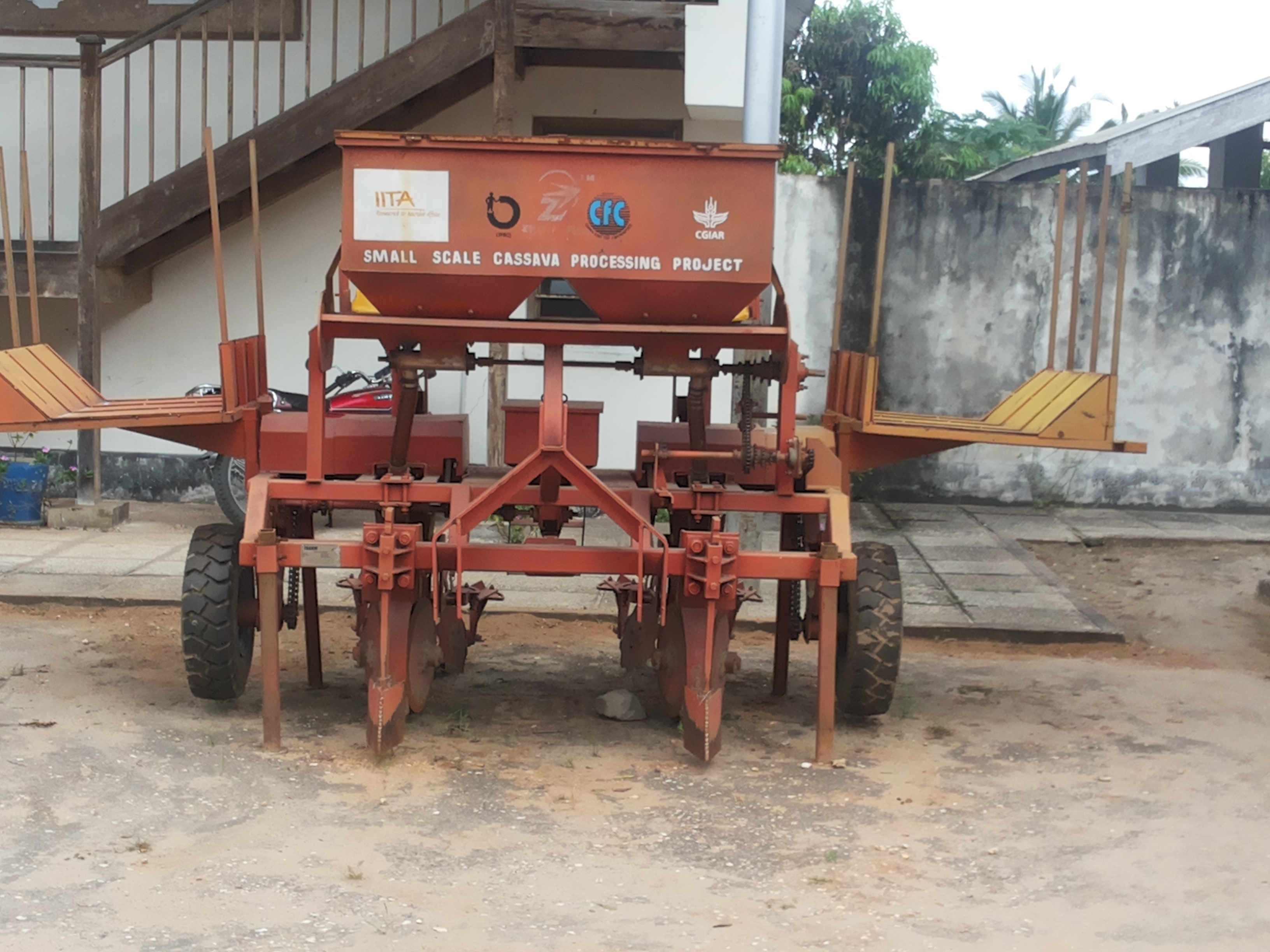Mechanized Cassava Planting and Harvesting
Summary
With yields as low as 10 t/ha, cassava farmers in Africa are not competitive in the global market. To be competitive, a minimum yield of 25 t/ha is expected. However, to get higher yields and greater economic benefits, improved management practices will be required. Mechanization of the cassava production system, the use of fertilizers, control of weeds, and the use of improved varieties can increase the yield of cassava beyond 25 t/ha. The planting and harvesting operations of cassava are usually done manually, thereby making it labour intensive and time consuming. Generally, it takes 8 to 10 persons to manually plant one hectare of land in a day against using a two-row mechanical planter that can plant 7-10 ha in a day, which is faster and 50% cheaper than manual planting. Similarly, manual harvesting is slow and associated with drudgery and high root damage in the dry season. Depending on the season, manual harvesting of cassava requires between 40 and 60 persons to harvest one hectare of cassava in a day against the two-row mechanical harvester that can harvest up to 3 to 5 ha of cassava farm in a day, depending on the terrain.
About the Solution
A two-row cassava planter (Model 2AMSU) for planting on flat ground has a planting rate of 0.5 - 0.8 ha/h at 700 mm row spacing. The planter may be drawn by a 90 hp (67.14 kW) tractor to plant at a depth of 60 - 100 mm below soil surface. Stakes loaded on the planter are cut with a power take-off (PTO) driven circular saws to cut the stakes to cuttings of 14 ± 3 cm to 149 ± 3 cm length.
Mechanical planting and harvesting are needed to break the labor bottleneck associated with cassava production, increase productivity and reduce production cost. The ultimate goal is to enhance the competitiveness of the cassava sub-sector.
A planter or harvester is driven by a tractor of specific minimum horsepower depending on the model of the planter or harvester. Stakes are loaded to synchronize with the speed of the tractor in order to achieve the predetermined planting spacing. Similarly, a harvester is driven by a tractor of suitable power depending on the model of the harvester.
Prior to the use of mechanical planting, the farm is prepared The two-row or four-row planter was designed to plant cassava on flat ground with a planting rate of 0.5 - 0.8 ha/h at 700 mm row spacing. Planter may be drawn by a 90 hp (67.14 kW) tractor. A power take-off (PTO) driven circular saw is installed to cut stakes to cuttings of 14 ± 3 cm to 149 ± 3 cm. Planting depth ranging between 60 and 100 mm below soil surface should be maintained. No ridges are needed for this model of planter. Mechanical harvesting should be done using a two-row or four-row harvester (similar to the planter). The planter needs a 120 hp (89.52 kW) tractor at a forward speed range of 2.1 to 6.7 km/h and at a digging depth range of 300 to 400 mm. The harvesting rate of the mechanical harvester would be between 0.3 and 0.5ha/h.
Commercialization
Commercially available
Solution Images
Institutions


